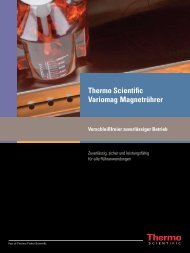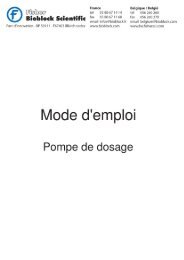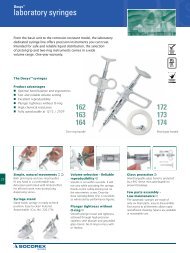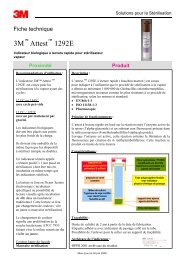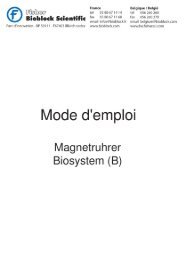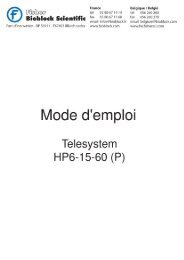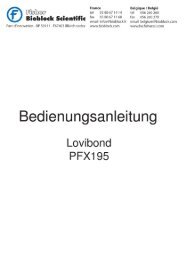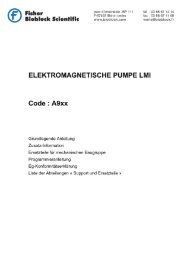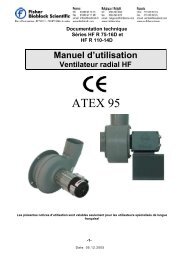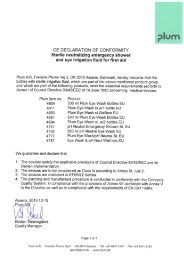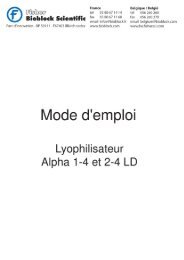FVA/A1 STERILIZERS
FVA/A1 STERILIZERS
FVA/A1 STERILIZERS
Create successful ePaper yourself
Turn your PDF publications into a flip-book with our unique Google optimized e-Paper software.
2. SAFETY IN OPERATION<br />
2.1. INTENDED USE<br />
! WARNING!<br />
<strong>FVA</strong>/<strong>A1</strong> - OPERATION AND<br />
MAINTENANCE MANUAL<br />
It is absolutely forbidden to use the sterilizer and its accessories for any use other than the allowed use specified in<br />
this manual.<br />
Depending on the chosen configuration, these sterilizers are capable of sterilizing solids and liquids by using various sterilization<br />
processes. In its basic configuration, the machine is suitable to process the following products.<br />
Sterilization of solids:<br />
- empty laboratory glassware;<br />
- stainless steel instruments, in bags or loose;<br />
- machine parts;<br />
- small stainless steel containers;<br />
- miscellaneous laboratory material;<br />
- delicate membranes and filters;<br />
- solid laboratory waste in open bags or contaminated liquids (materials that can cause microbiological contamination on<br />
the part of viruses or bacteria of the surrounding environment).<br />
Sterilization of liquids:<br />
- liquids and culture media (agar) contained in non-hermetically closed containers;<br />
- various solutions contained in non-hermetically closed containers;<br />
- various solutions contained in small hermetically-closed containers.<br />
2.2. PROHIBITED USE<br />
! WARNING!<br />
All uses that are not specified explicitly in the previous subsection must be assumed to be prohibited.<br />
It is necessary to avoid treating the following materials:<br />
- flammable or explosive substances;<br />
- non-flammable liquids that have a high vapor pressure (halocarbons and the like), even in closed containers;<br />
- gas in bottles and spray cans (even if the cans are depleted because they have been used up);<br />
- substances that due to decomposition caused by moist heat can generate toxic, noxious, flammable, or<br />
explosive gases or vapors or can generate flammable, noxious, toxic solids or residues.<br />
! WARNING!<br />
Moreover, since the sterilizing effect is ensured by the direct or indirect contact of water vapour with the surfaces to be<br />
treated, moist-heat sterilization processes are accordingly not suitable for treating:<br />
- closed vapor-impermeable containers whose interior is to be sterilized (for example closed empty ampoules);<br />
- closed vapor-impermeable containers containing an anhydrous material to be sterilized (for example ampoules<br />
containing anhydrous oily substances and anhydrous powders).<br />
When in doubt, it is advisable in any case to consult FEDEGARI beforehand.<br />
ID no. 85693 Rev. 2 6 / 31 July 2005



